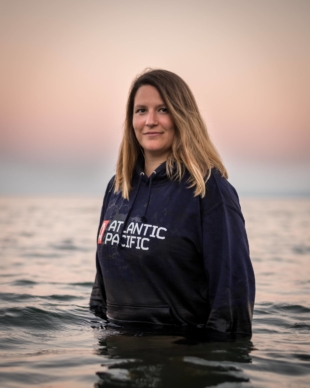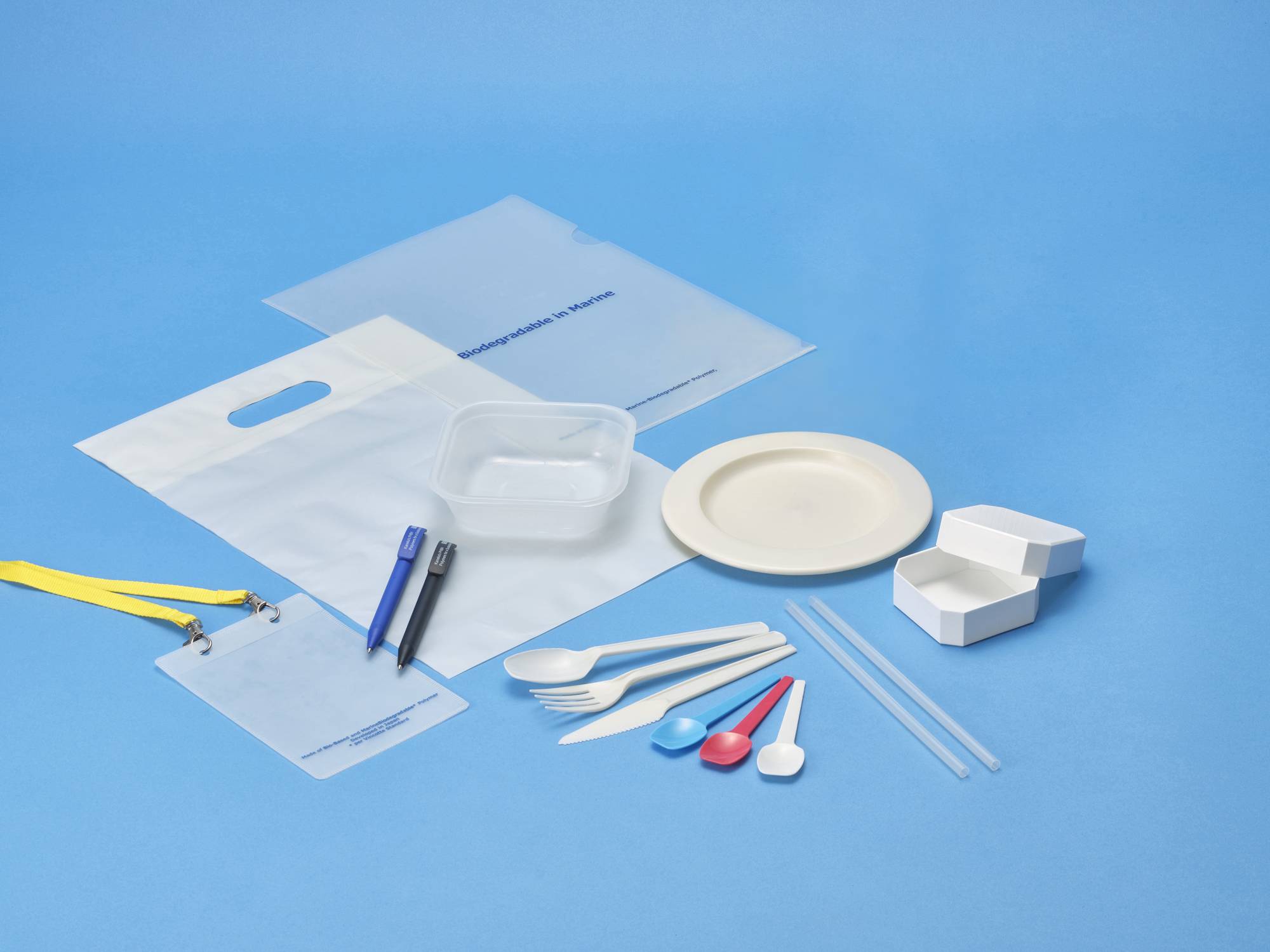It’s official: In March, the United Nations Environmental Assembly endorsed a global pact on the life cycle of plastic. It has been declared a seismic shift in the battle against marine pollution, but what will happen to the oceans before those potential positive effects come?
Japan’s coasts and seas are awash with plastic waste. More PET bottles and plastic cups and take-out containers were found on the country’s beaches than any other litter except cigarette butts, according to a 2020 study by Statista. And that’s not set to change soon: Japan continues to produce 9.4 million tons of plastic waste annually according to the Environmental Investigation Agency, a London-based nongovernmental organization.
In deeper waters, the Great Pacific Garbage Patch of floating plastic is an estimated 1.6 million square kilometers, and the amount of plastic waste entering the ocean annually could rise to 29 million tons by 2040 without action, according to a 2020 Pew report. This phenomenon has contributed to the 35,000 tons of microplastics already in the oceans globally, as noted by the Scottish nonprofit Fidra.
March saw Japan provisionally agree to sign the United Nations Environmental Assembly’s global pact to eliminate plastic pollution by addressing the life cycle of plastic, (the agreement is due for completion in 2024). In April, Japan enacted its own attempt to address the plastic issue from creation to disposal. The Plastic Resource Circulation Act aims to reduce the use of petroleum-based plastics and promote recycling, contributing to the Osaka Blue Vision set out at the 2019 G20 meeting, which is “to reduce additional pollution by marine plastic litter to zero by 2050.”
Fighting the tide
Efforts to tackle this problem have not been solely legislative, however. Enter marine-biodegradable plastic, a material that breaks down into water and carbon dioxide when subjected to microorganisms, heat and light in aquatic environments. The material has been heralded as a solution to marine plastic pollution. According to the Ministry of Economy, Trade and Industry (METI), “marine-biodegradable plastics (are) one of the most promising, cutting-edge technologies for addressing (marine plastic pollution).”
As examples of good practice, METI points to Tokyo-based Plants Laboratory Inc.’s marine-biodegradable resin for hydroponics, which can replace urethane-based support structures that deteriorate into tiny pieces and infiltrate the soil. And Osaka’s Rengo Co., Ltd. claims its marine-biodegradable spherical particulate Viscopearl, a 100% wood pulp cellulose-derived product, could replace plastic beads commonly found in detergents, cosmetics and abrasives.
Kaneka Corp. is expanding production of Green Planet, its fully plant-derived and marine-biodegradable polymer used to make items such as cutlery and shopping bags. Its Green Planet-made straws have been available at 7-Eleven stores since 2019 and on Ito En tea cartons since 2021. In April, Tokyu Hotels became the first chain in Japan to stock Green Planet-made toothbrushes.
From January 2024, Kaneka will increase its annual production capacity from 5,000 tons to 20,000 tons and has set a target of 200,000 to 300,000 tons by 2030.
Kaneka spokesperson Chika Harada says the company plans to apply the technology next to snack packaging and seedling pots, pointing out that it is “highly anticipated as a business solution that will play a key role in the environment.”

Green Planet is but one Japan-made material designated “OK Biodegradable Marine” by international certifying body TUV Austria. To achieve certification, at least 90% of the product must biodegrade within six months in seawater at a temperature of 30 degrees Celsius.
Another material recognized by TUV Austria is Osaka-based Daicel Corp.’s Cafblo, a constituent of eyeglass frames, protective LCD films and cosmetics that is made from plant-derived cellulose and naturally occurring acetic acid. Unlike conventional cellulose acetate, 90% of which biodegrades in seawater after 260 days, Cafblo needs just 25 days to be broken down by 98%.
Tokyo’s Asahi Kasei, meanwhile, obtained the certification for Bemliese, a nonwoven fabric used in facial masks and disinfectant wipes, while Aichi Prefecture’s Fukusuke Kogyo Co. was granted the label for a shopping bag made primarily from corn-derived resin and capable of holding up to 8 kilograms.
Against the current
A 2020 report by Mitsui & Co. Global Strategic Studies Institute claimed market growth will result in marine-biodegradable plastics becoming less expensive and lead to wider adoption. Even so, more work needs to be done on international standards for marine biodegradability, the report said, pointing out certifications such as OK Biodegradable Marine are based on standards “withdrawn” in 2015 for being inadequate. A Yano Research Institute report goes further, stating that OK Biodegradable Marine certification is not a guarantee that the material does not have a bad influence on the natural ecosystem.
Indeed, establishing ISO certification for marine-biodegradable plastic is one of the requirements for the material to gain a solid footing, according to METI. The Ibaraki Prefecture-based National Institute of Advanced Industries is building on two standards to evaluate marine biodegradability, which were introduced by ISO in 2020.
Still, not everyone is optimistic about marine-biodegradable plastic, with environmental organizations maintaining that reducing, reusing and recycling plastic is the better approach. The United Nations Environment Programme cites the possibility that the material would still cause “physical and chemical impacts on the marine environment.”
“We do not believe that marine biodegradability is the solution to the marine plastic problem,” said a spokesperson for Mitsubishi Chemical Holdings Group. Instead the company called for the development of “a system (collection and composting of plastic products) that makes use of the biodegradable function.”
Other organizations in Japan, meanwhile, are tackling marine plastic by rethinking the use of plastic — especially the single-use kind — from the ground up.
Natalia Hirai, communications officer for Greenpeace Japan, says “shifting to other single-use materials” such as marine-biodegradable plastic is not the answer to marine plastic, noting that the world “must reduce plastic production at source” by “drastically reducing and making reuse and refill a new norm in our society.”

Japan Environmental Action Network is carrying out research and educational programs about marine plastic. Such activities are designed to fill gaps in public awareness of key issues. Although 89% of people in a 2019 government survey were concerned about marine plastic pollution, only 52% in a 2020 poll understood that littering of plastic products on land could cause pollution at sea.
Atlantic Pacific International Rescue, a nongovernmental organization established to combat global drowning, is also delivering education. Its sea safety and search and rescue training is designed to prepare people for the growing impact of climate change, such as more frequent extreme weather and more catastrophic natural disasters. Its programs, meanwhile, cover the impact of plastic consumption on the oceans, which affects human health and climate systems.
“The sea and all the creatures in it are a vital part of our ecosystem,” says Kate Sedwell, director of Atlantic Pacific International Rescue. “We need it to thrive, and it is currently being choked with plastic.”
This year the organization tasked students in both Wales and Kamaishi, Iwate Prefecture, to make new items from single-use plastic as part of its “Precious Plastic Project,” which aims to convert marine plastic into disaster prevention products such as lifebuoys, rescue boards and lifeboats.
It’s possible that increased awareness coupled with greater innovation in the field of marine-biodegradable plastics could help turn the tide of rising plastic pollution in Japan’s seas. But efforts to educate the public are far from new, and questions remain on the complete impact of these new materials. That’s why the estimated 2.2 million people, 1,000 organizations and 120 companies who appealed to the U.N. for the global pact to address the life cycle of plastic believe it is the best way so far to eliminate plastic pollution in all environments.





















With your current subscription plan you can comment on stories. However, before writing your first comment, please create a display name in the Profile section of your subscriber account page.